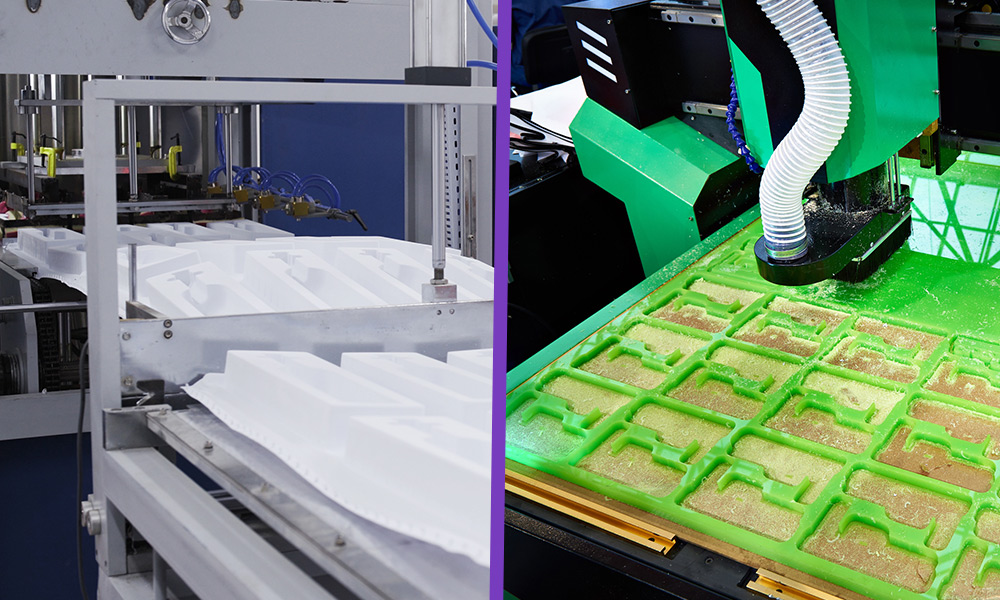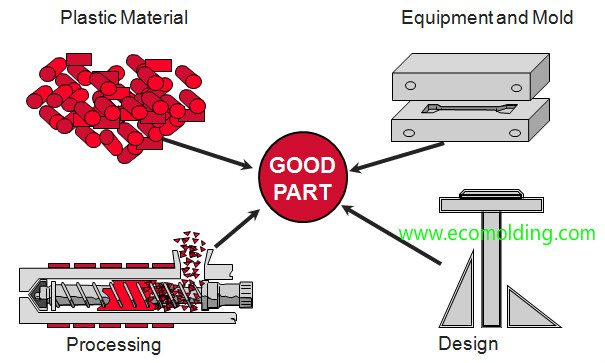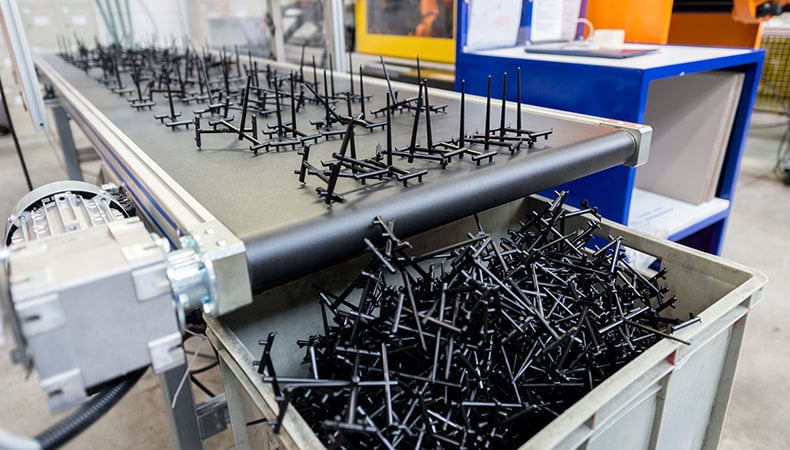Exploring the Future of Plastic Injection Molding in the Manufacturing Industry
Exploring the Future of Plastic Injection Molding in the Manufacturing Industry
Blog Article
Comprehending the Fundamentals of Plastic Injection Molding Processes
Plastic injection molding functions as a keystone of modern manufacturing, supplying a systematic method to generating complicated elements with accuracy. This procedure not only includes the basic actions of melting and infusing materials into molds but also entails a nuanced understanding of numerous influencing aspects, such as temperature and pressure. As sectors increasingly require performance and high quality, the complexities of this technique become a lot more essential. Exploring these necessary elements can expose just how even minor adjustments can result in considerable improvements in production results, questioning regarding the potential for advancement in this well-known procedure.
What Is Plastic Shot Molding?
Plastic injection molding is an extensively made use of production process that changes thermoplastic and thermosetting materials right into accurate and intricate shapes. This strategy is favored for its capacity to create high quantities of identical components with exceptional precision, making it an indispensable technique in different industries, including auto, consumer items, and medical gadgets.
The procedure involves thawing the picked plastic material and injecting it right into a mold under high pressure. The mold and mildew, designed to the requirements of the preferred part, enables the liquified plastic to materialize as it cools and solidifies. As soon as the material has actually hardened, the mold and mildew is opened up, and the completed element is ejected.
Plastic shot molding offers numerous advantages, consisting of reduced waste, consistency in production, and the ability to incorporate complex designs that may be challenging with various other producing approaches. Additionally, it supports a broad variety of materials, each offering one-of-a-kind properties that can be tailored for specific applications. As sectors proceed to introduce, plastic injection molding stays at the forefront, enabling the development of advanced items that satisfy progressing consumer needs.
The Injection Molding Process
The injection molding process is an advanced technique that entails several vital phases to create high-quality plastic components. Originally, plastic pellets are fed right into a warmed barrel where they are merged a thick fluid. This molten plastic is after that injected under high stress right into a precision-engineered mold, which forms the product into the desired type.
When the mold and mildew is filled up, the plastic is enabled to strengthen and cool, taking the shape of the mold tooth cavity. Cooling time is critical, as it impacts the cycle time and the last buildings of the shaped part. After enough cooling, the mold and mildew opens up, and the completed component is expelled using ejector pins.

Materials Used in Injection Molding
Various materials can be used in the shot molding procedure, each offering one-of-a-kind properties that provide to certain applications. One of the most commonly made use of products include thermoplastics, thermosetting plastics, and elastomers.

Thermosetting plastics, like epoxy and phenolic materials, undertake a chemical adjustment throughout the curing procedure, leading to a stiff, inflexible framework. These materials are optimal for applications requiring high heat resistance and architectural integrity, frequently utilized in automotive parts and electric insulators.
Elastomers, consisting of silicone and rubber-based materials, provide adaptability and durability. Their unique homes make them ideal for applications that demand flexibility, such as gaskets and seals.
Additionally, specialized materials like bio-based plastics and composites are gaining grip for their ecological benefits try this and boosted efficiency attributes, expanding the scope of injection molding applications in different industries. Recognizing the homes of these products is critical for selecting the suitable kind for certain projects.
Benefits of Injection Molding
Injection molding sticks out as an extremely reliable manufacturing procedure that uses many advantages for creating complex get rid of accuracy. Among the most substantial advantages is the capability to create elaborate styles that would be difficult or difficult to accomplish with various other approaches (Plastic Injection Molding). The procedure enables thorough attributes and limited tolerances, making certain premium components
In addition, shot molding is known for its fast production capabilities, making it an ideal option for high-volume manufacturing. As soon as the mold and mildew is created, components can be created promptly, minimizing preparations and boosting total productivity. This efficiency not only reduces manufacturing expenses yet also provides an one-upmanship on the market.
The flexibility of materials utilized in shot molding further improves its appeal. A large range of thermoplastics and thermosetting polymers can be used, enabling makers to select materials that best meet their certain needs, including warm, strength, and flexibility resistance.
Furthermore, the process reduces waste, as excess material can often be recycled and recycled. This sustainability aspect adds to a reduced environmental effect, making shot molding a liable manufacturing choice. On the whole, the advantages of shot molding make it a recommended method for many markets.
Factors Affecting Product Top Quality
While many factors can influence item quality in shot molding, comprehending these elements is vital for attaining optimum results. Secret facets include product option, refining specifications, and mold and mildew style.
Product choice plays an important function, as different polymers display special buildings that impact flowability, strength, and thermal security. Poor material choice can bring about problems such as bending or incomplete filling.
Processing parameters, including temperature, cycle, and stress time, have to be meticulously managed. Variants in these settings can lead to variances partly measurements and surface finish. For circumstances, excessively high temperature levels may create deterioration of the polymer, while inadequate stress can result in brief shots.
Mold layout is similarly essential, as it determines the flow of the molten plastic and Discover More the cooling procedure. Improperly developed mold and mildews might bring about uneven air conditioning prices, causing dimensional inaccuracies and recurring tensions.

Conclusion
Finally, plastic injection molding acts as an essential production procedure that makes it possible for the efficient manufacturing of high-grade elements. Proficiency of the shot molding procedure, consisting of the understanding of materials and the influence of various factors on product top quality, is necessary for attaining ideal results. The advantages of this approach, such as cost-effectiveness and layout adaptability, additional highlight its relevance throughout multiple industries, solidifying its standing as a preferred option for high-volume production.
Plastic injection molding offers as a keystone of modern production, providing a methodical method to creating intricate components with precision.Plastic injection molding supplies a number of benefits, consisting of lowered waste, uniformity in manufacturing, and the capability to incorporate complex styles that may be testing with various other manufacturing methods (Plastic Injection Molding). As industries proceed to innovate, plastic injection molding stays at the center, making it possible for more information the development of sophisticated products that fulfill evolving customer needs
The injection molding process is an advanced technique that involves a number of crucial stages to generate top notch plastic components.In conclusion, plastic shot molding serves as a vital manufacturing process that makes it possible for the efficient manufacturing of top notch parts.
Report this page